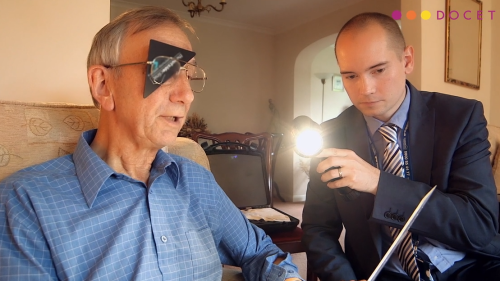General
![]()
![]()
No CPD Points

This course looks at carrying out a domiciliary visit, including advice on arrangements before the visit, adapting the room and carrying out the eye check, dispensing, record keeping and the role of the carer or care home staff.
A number of pieces of important guidance and legislation are referred to in this programme, and a fully detailed list of reference sources is provided under the 'More Information' section on this course page. Expert optometrists and others also provide their 'Top Tips' for domiciliary optometrists - a summary of these can also be found in the 'More Information' section.
First published:June 2015
Last reviewed: June 2024